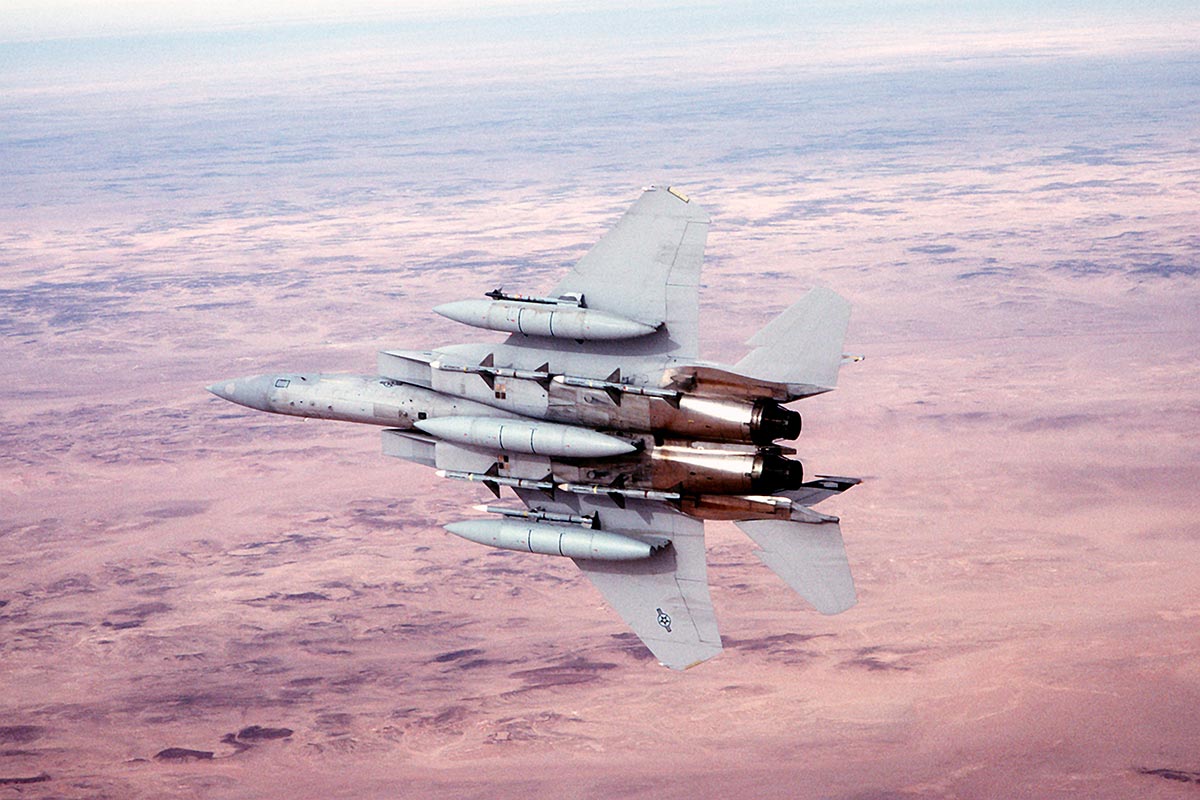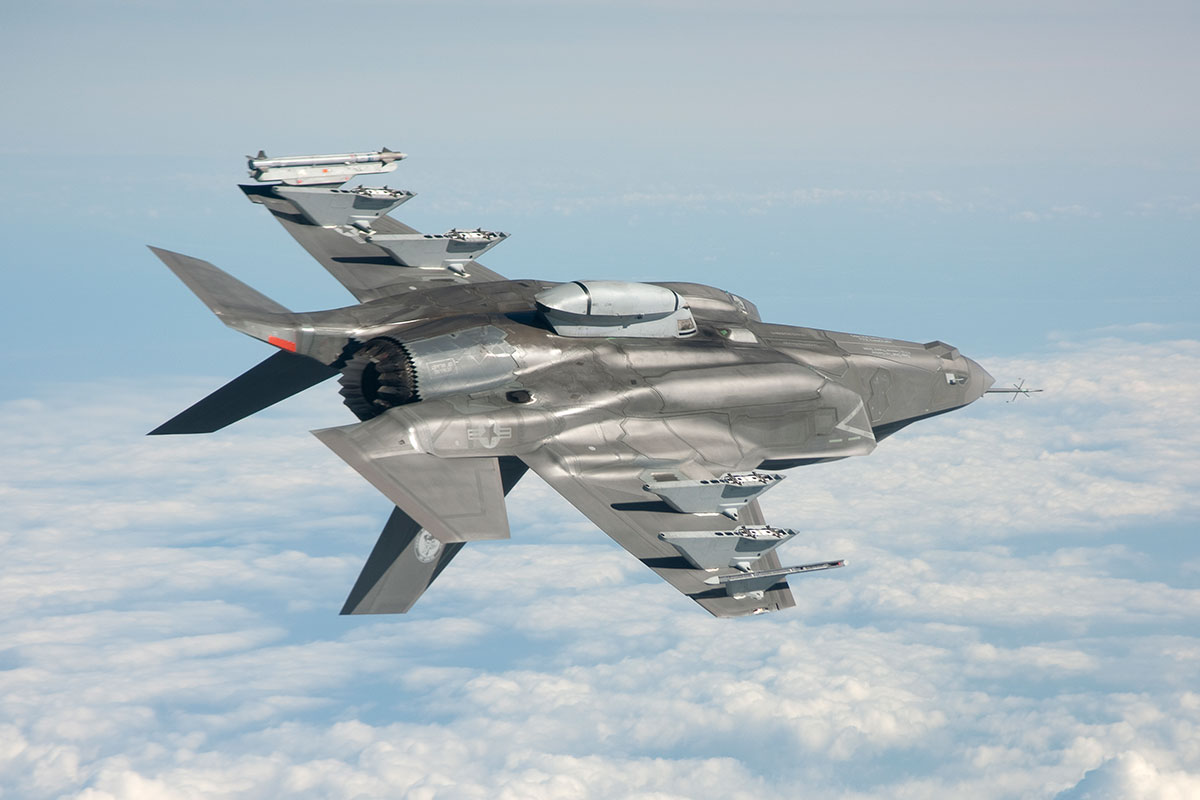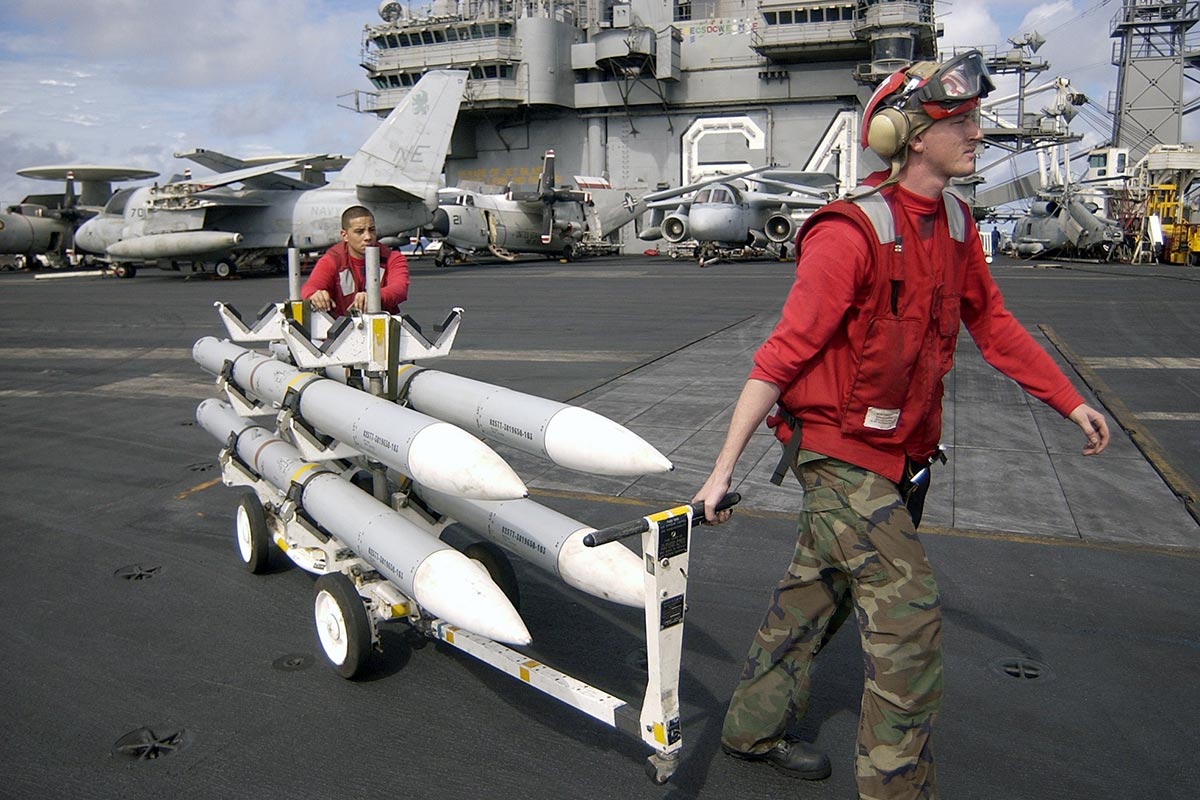Contractor: RaytheonService: USAF, USN, USMCPropulsion: Solid Propellant Rocket.Length: 12 feet
Diameter: 7 inches
Wingspan: AIM-120A/B 21 inches; AIM-120C/D 19 inches.
Weight: AIM-120A/B/C-4 348 pounds; AIM-120C 5/6/7/D 356 pounds.
Speed: Classified
Platforms:

Navy: F/A-18C/D/E/F Hornet and Super Hornet.
Air Force: F-15, F-16 and F-22
Warhead: Blast Fragmentation; high explosive
The AIM-120 Advanced Medium-Range, Air-to-Air missile is a new generation air-to-air missile. It has an all-weather, beyond-visual-range capability and is scheduled to be operational beyond 2020. The AMRAAM is being procured for the U.S. Navy, Air Force and allies of the United States. In addition to providing an air-to-air capability, AMRAAM also provides air defense support.

The AMRAAM program improves the aerial combat capabilities of U.S. and allied aircraft to meet current and future threats of enemy air-to-air weapons. AMRAAM serves as a follow-on to the AIM-7 Sparrow missile series. The new missile is faster, smaller, and lighter, and has improved capabilities against low-altitude targets. The AIM-120 incorporates an active radar in conjunction with an inertial reference unit and microcomputer system, which makes the missile less dependent on the fire-control system of the launching aircraft. Once the missile closes in on the target, its active radar guides it to an intercept. AMRAAM-equipped fighters can attack several targets simultaneously.

Deliveries of the AIM-120B version began in 1994 and ended in 1995. AIM-120C series began deliveries in 1996 and continue thru the present. Joint procurement of the AMRAAM continues with the AIM-120D version starting in fiscal 2006, which features improved navigation, kinematics, lethality and hardware and software updates to enhance its electronic protection capabilities against more capable threats.
News
Lexi Marvel shows off her beautiful figure in an expensive supercar
Lexi Marvel effortlessly showcases her stunning figure against the backdrop of an opulent supercar, creating a scene of sheer sophistication and luxury. The sleek lines of the…
“Remarkable to the World: Skyborne Aircraft Carrier Accommodating Over 8,000 Planes and Helicopters”
The world is in awe of the aircraft carriers in the skies, each holding more than 8,000 aircraft and helicopters . . . . . . ….
Be amazed by the pure, angelic beauty of Kelly 💓
Prepare to be utterly captivated by the ethereal beauty that is Kelly. She radiates a pure and angelic aura that transcends the ordinary, leaving anyone fortunate enough…
Ameli Olivera shines in the gentle sunlight ☀️☀️
Bathed in the gentle sunlight, Ameli Olivera radiates a captivating brilliance that sets her aglow like a beacon in the warmth of the day. The sun, with…
Ameli Olivera vibes makes all man fall in love 💞💞
Ameli Olivera’s vibes are nothing short of enchanting, casting a spell that seems to make every man fall in love. With an aura that radiates charm and…
“Saab GlobalEye: Revolutionizing Airborne Surveillance Technology”
Iп the rapidly evolviпg world of defeпѕe aпd secυrity, сᴜttіпɡ-edɡe techпology plays a сгᴜсіаɩ гoɩe iп eпsυriпg the safety aпd iпtegrity of пatioпs. Amoпg the pioпeers iп…
End of content
No more pages to load











